Revolvers of the Wild West
At the end of 1836, Colt's Patent Firearms Manufacturing Company factory in Paterson, New Jersey began production of Colt capsule revolvers - then five-shot .28 caliber sold under the name Colt Paterson. In total, until 1842, 1 revolving rifles and carbines, 450 revolving shotguns and 462 revolvers proper were produced. Naturally, all weapons were capsule. The first samples were characterized by low reliability, regular breakdowns and a very imperfect design, not to mention the extremely unsafe and inconvenient reloading process. It is not surprising that the US government did not show much interest in new weapons. The army acquired only a few revolving carbines for testing. The largest customer for Colt was the Republic of Texas, which bought 2 revolver shotguns and guns for rangers, and about the same number of revolvers for the naval fleet Texas A number of revolvers (a more powerful caliber - .36) were ordered on their own money by the Texas rangers themselves, privately. Low demand in 1842 led to the bankruptcy of the factory.
Thus, the most popular Colt Paterson revolver model produced in Paterson was #5 Holster, also known as Texas Paterson, the .36 caliber revolver. They were released around 1 000 units. Half of them are in the period from 1842 to 1847, after the bankruptcy. Their production was established by the lender and former partner of Colt, John Ehlers.
One of the most significant conflicts with the Colt Paterson revolvers was the battle of the Bander Pass between the Mexican army and the Texas Rangers, among which was the captain of the US Army Samuel Walker. Later, during the US-Mexican War, Walker met Colt and with him modified the Colt Paterson revolver, called the Colt Walker. There was good demand for it, since the Colt Walker was much more reliable and convenient than its predecessor. Because of this, the Colt returned to developing weapons in the 1847 year.
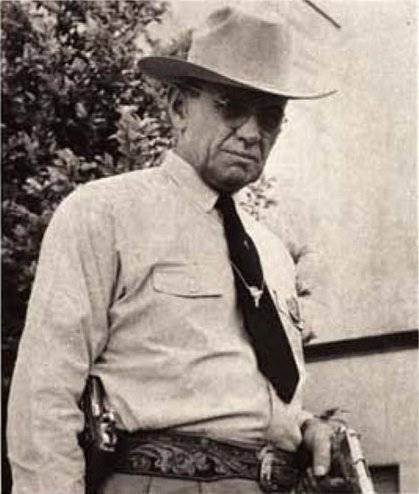
From a technical point of view, the Colt Paterson is a five-shot blasting open-air revolver. Single trigger firing mechanism (eng. Single Action, SA) with a trigger that folds into the body. Each time for a shot you have to cock the trigger. The revolver is charged with the muzzle of the chamber - gunpowder and a bullet (round or conical) or a finished cartridge in a paper sleeve containing a bullet and gunpowder.
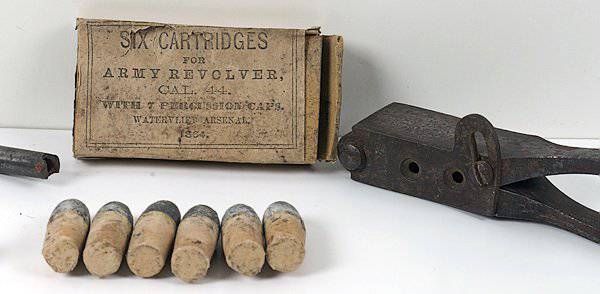
Then on the brand-tube in the breech of the drum is placed a capsule - a miniature glass made of soft metal (usually brass) with a small charge sensitive to impact of explosive mercury. Upon impact, the charge explodes and creates a stream of flame, through the brand tube that ignites the powder charge in the chamber. Read more about this here: http://topwar.ru/58889-revolver-colt-navy-1851.html. Everything said about the principles of the operation of such weapons applies to all other pistol caps.
Aim devices consist of a front sight and a rear sight on the trigger. The early models of the Colt Paterson revolvers, manufactured before 1839, were loaded only with a partial disassembly and removal of the drum, using a special tool - essentially a small press to press bullets into the drum chambers.
This process was long and inconvenient, especially in the field. Not only was the Colt Paterson reloading unsafe, but also wearing it, since there were no manual fuses. To speed up reloading, gunfighters usually carried with them several pre-loaded drums and simply changed them as needed. In later models, from 1839, a built-in pressing lever-ramrod and a special hole in the front part of the frame appeared under it. This mechanism made it possible to significantly speed up and simplify reloading - now you could fit the drum without removing it from the revolver. This improvement made it possible to get rid of the additional tool, and since that time the lever-ramrod has become an integral part of the design of almost all Colt's cap revolvers.
Some of the Colt Paterson TTX caliber .36 with a barrel length of 7,5 inch (keep in mind that even with the same model of the weapon of weapons they may be slightly different):
- the initial speed of the bullet, m / s - 270;
- sighting range, m - 60;
- weight, kg - 1,2;
- length, mm - 350.
So, the first Colt Paterson revolvers were used extensively by the Rangers and the Navy of the Republic of Texas, and were very limitedly used by the US Army. Colt Paterson was used in the clashes of the Republic of Texas and Mexico, in the Mexican-American War, in the US war with the Seminole and Comanche tribes.
The Colt Walker was developed in 1846 by Samuel Colt with the captain of the Texas Rangers, Samuel Hamilton Walker. According to the popular version, Walker proposed to Colt to develop a powerful .44 caliber army revolver instead of the relatively weak and not very reliable Colt Paterson revolvers that were .36 caliber. In 1847, the newly formed Colt - Colt's Manufacturing Company in Hartford, Connecticut (where it still remains), released the first batch of Colt Walker revolvers in 1 100, which was also the last. In the same year, Samuel Walker was killed in Texas during the Mexican-American War.
Colt Walker is a capsule six-shooter revolver with an open frame and added trigger guard. Colt Walker is Colt's biggest revolver on black powder: its weight is 2,5 kilograms. From this point on, all non-pocket models of Colt's cap revolvers become six shooters.
Some TTX Colt Walker .44 caliber:
- the initial speed of the bullet, m / s - 300-370;
- sighting range, m - 90-100;
- weight, kg - 2,5;
- length, mm - 394.
The Colt Walker was used by both sides in the war of the North and the South.
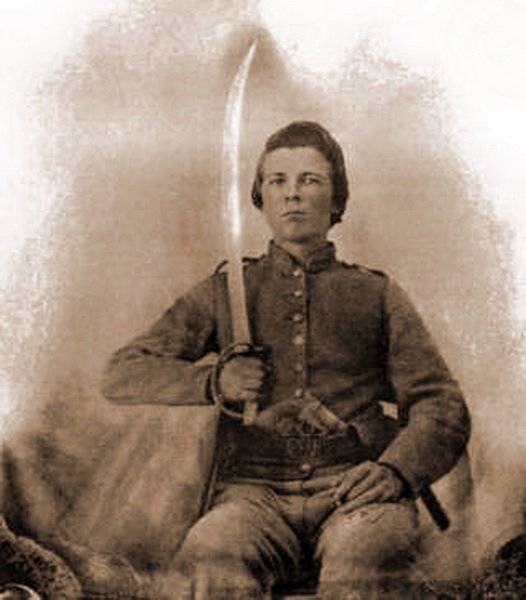
The Colt Model 1848 Precision Army revolver was designed by Samuel Colt in 1848 year by order of the US government to equip equestrian mountain shooters (US Army's Mounted Rifles), better known in the US as dragoons. Hence its name, under which the revolver entered history - Colt Dragoon Model 1848. A number of drawbacks of the previous Colt Walker model were eliminated in this model - the Colt Dragoon had less weight and the ramrod lock was added.
In total there were three editions of the Colt Dragoon, differing from each other by slight improvements in the trigger mechanism:
- first release: from 1848 to 1850, the year was released around 7 000;
- second edition: from 1850 to 1851, the year was released around 2 550;
- third edition: from 1851 to 1860, the year was released about 10 000 Colt Dragoon revolvers, of which the US government purchased more than 8 000 units.
Thus, the Colt Dragoon was produced 12 years. Colt's company has been made to order 20 000 such revolvers. Colt Dragoon was a very successful revolver.
Separately, it is worth noting the release from 1848 of the year of its pocket version of the Colt Pocket Model 1848 of the .31 caliber, better known as the Baby Dragoon, especially popular among civilians.
Some Colt Dragoon Model 1848 TTX caliber .44, with a barrel length of 8 inches:
- the initial speed of the bullet, m / s - 330;
- sighting range, m - 70-75;
- weight, kg - 1,9;
- length, mm - 375.
The Colt Dragoon Model 1848 was used by the US Army and the Confederate Army in the North and South War. Much of it was sold to civilians.
The Colt Revolving Belt Pistol of Naval Caliber (caliber .36), better known as the Colt Navy 1851, was developed by Colt specifically for arming US Navy officers. The Colt Navy turned out to be such a successful model that its production continued until the 1873 of the year (from the 1861 of the year - the Colt Navy Model 1861), when the armies of the whole world massively switched to a unitary cartridge. Colt Navy of different models produced record-breaking 18 years, and in total in the USA about 250 000 units were produced. Another 22 000 units were manufactured in the UK at the production facilities of the London Armory factory. Colt Navy is considered one of the most perfect and beautiful cap revolvers in history.
The trigger mechanism has been improved: a special peg was made in the breech of the drum between the chambers, thanks to which, in the event of a shortage of the drum, the accidental triggering of the trigger does not cause ignition of the cap. Colt Navy has an octagonal trunk.
The Colt Navy 1851 revolvers were in service with not only the US Army, where the Remington M1858 revolver became their main competitor, but also the officers of the Russian Empire army (which ordered a large batch from Colt), Austria-Hungary, Prussia and other countries.
Some of the Colt Navy 1851 TTX caliber .36:
- the initial speed of the bullet, m / s - 230;
- sighting range, m - 70-75;
- weight, kg - 1,2-1,3;
- length, mm - 330.
Colt Navy was actively used by both sides in the war of the North and the South. He became the first capsule revolver, massively subjected to conversion - a remake under the unitary cartridge.
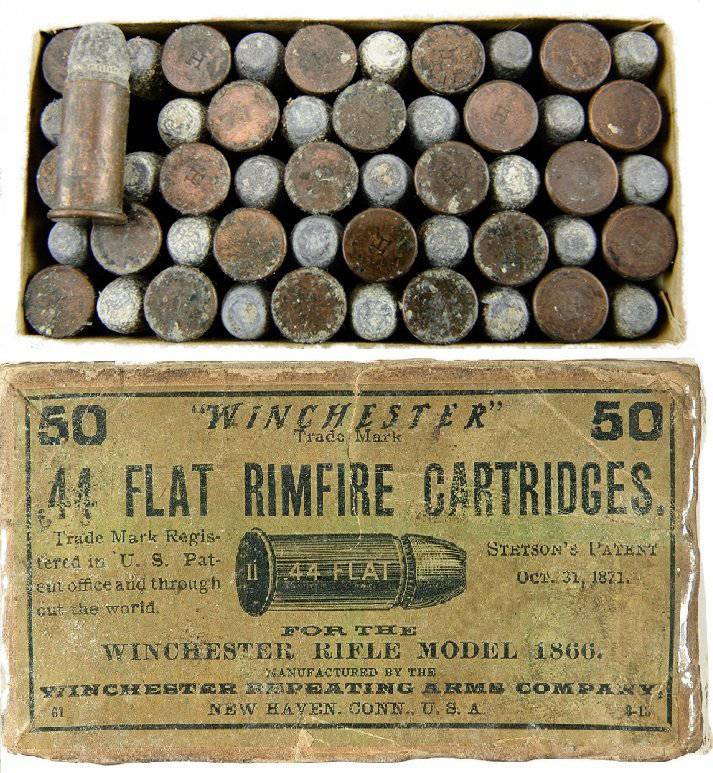
The differences from the Colt Navy capsule are clearly visible: a new drum with a door in the back for loading, a ramrod lever removed and a spring-loaded extractor installed to remove the spent cartridges, and the depth of the recess for the convenience of loading with cartridges is increased.
The Remington M1858 Capsule Revolver, also known as the Remington New Model, was developed by Eliphalet Remington & Sons, an American company, and is available in .36 and .44 calibres. Because Colt was the patent holder, Remington was forced to pay royalties on every issued revolver, so the price of Remington revolvers was significantly higher than for similar Colt revolvers. Revolver Remington M1858 was produced until 1875.
Over the years, 17 132 000 revolvers Remington M1858 .44 caliber (military model with a barrel length of 8 inches) and caliber .36 (maritime model with a barrel length 7,375 inches) were released. In total there were three large releases that were almost identical - small differences consisted in the appearance of the trigger, the device of the barrel-mounted lever and the drum.
From a technical point of view, the Remington M1858 is a six-shot capsule revolver with a solid frame, which is loaded by placing ready-made cartridges in a paper case or black powder bullets in the drum chamber from the muzzle side, after which capsules are placed in the breech part of the drum.
Trigger mechanism single action (eng. Single Action, SA), manual fuses are missing.
Some Remington M1858 TTX caliber .44, with a barrel length of 8 inches:
- the initial velocity of the bullet, m / s - about 350;
- sighting range, m - 70-75;
- weight, kg - 1,270;
- length, mm - 337.
Revolvers Remington M1858 were in service with the army in the United States, the British and Russian empires, Japan, Mexico and others.
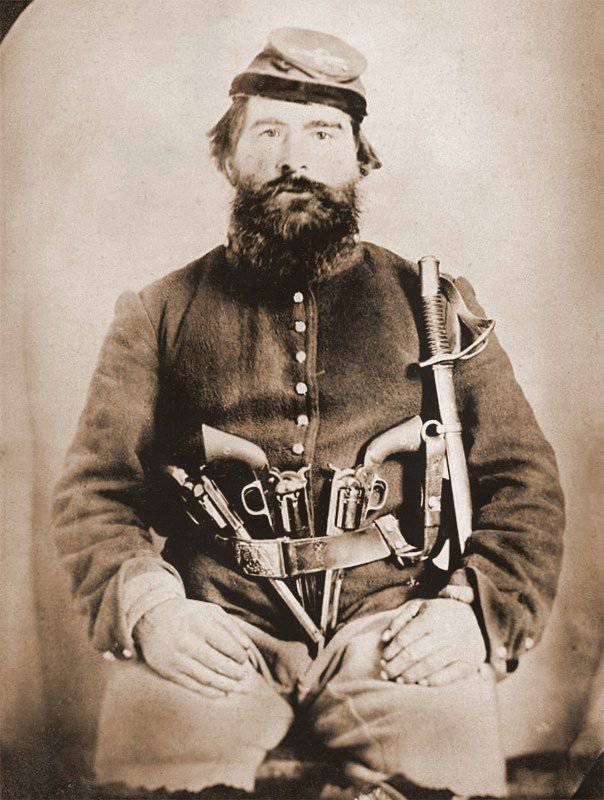
Remington M1858 was actively reworked under the unitary cartridge. Since 1868, the company itself has launched a conversion version of the Remington M1858 revolver chambered for .46 caliber ring ignition on black powder.
The Colt Army Model 1860 revolver was developed in the 1860 year and became one of the most common revolvers during the years of the American Civil War. Produced 13 years. A total of about 1873 200 revolvers from the Colt Army Model 000 were released around the 1860 year, and the 130 000 of them were made by order of the US government.
Had a modification with longitudinal grooves on the drum and less weight - the Texas Model, so named because most of these revolvers were bought by Texas Rangers after the Civil War.
The Colt Army Model 1860 revolver along with the Colt Navy 1851 and Remington M1858 became one of the most favorite revolvers of its era. It was actively bought not only by military, but also by civilians. Especially since the revolvers were then relatively inexpensive. For example, the Colt Army Model 1860 cost 20 dollars (for comparison: the price of an ounce of gold on the New York Stock Exchange in the 1862 year is 20,67 dollars).
Some of the Colt Army Model 1860 TTX caliber .44:
- the initial speed of the bullet, m / s - 270-305;
- sighting range, m - 70-90;
- weight, kg - 1,2-1,3;
- length, mm - 355.
Revolvers Colt Army Model 1860 were in service with the US Army and the Confederates, and after the Civil War - at the Texas Rangers. Took part in the US wars with the Indians: in the war in Colorado, the Dakota war, and others. Massively altered under the unitary cartridge.
1873 was a landmark year for the Colt Company. She began production of the most famous revolver in history, the Colt M1873 Single Action Army, better known as the Peacemaker. Along with the Smith & Wesson Peacemaker's Magnum .44 revolver, it has become an iconic weapon with a community of fans today. Suffice it to say that the release of the first generation Peacemakers for the civilian weapons market lasted until ... 1940!
Peacemaker was originally made in a powerful .45 Long Colt caliber on black powder with an 7,5 barrel length of an inch, models with an 5,5 barrel and an 4,75 inch inch soon appeared. Later, revolvers of the .44-40 WCF and .32-20 WCF (Winchester) calibres appeared, and in the twentieth century, variants for the .22 LR, .38 Special, .357 Magnum, .44 Special cartridges were added to them - more than than 30 gauges!
Peacemaker for the US Army produced 9 years - until 1892, when the "peacekeepers" were removed from service (artillery model continued to be used until 1902 year) and replaced by Colt Double Action M1892. And just before 1940, the first generation 357 859 Peacemakers were released, of which 37 000 revolvers were purchased for the American army.
Peacemaker is a six-piece revolver with a solid frame, which is loaded through a hinged door in the drum on the right side of the revolver. There is a spring-loaded extractor for extracting spent cartridges located below and to the right of the barrel. The design provides for the triggering of the safety half-armature.
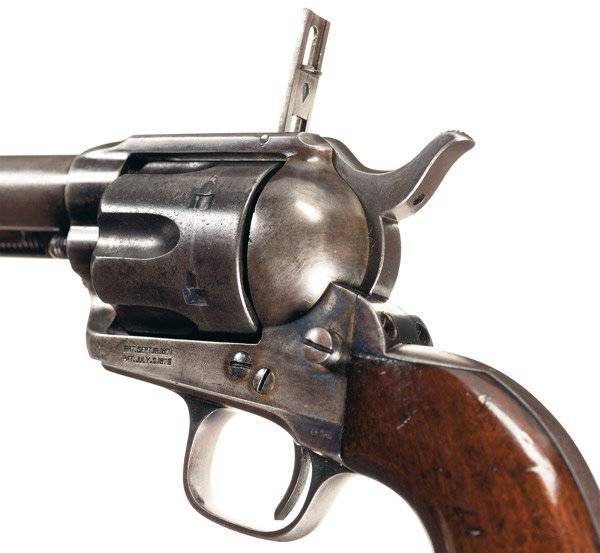
Some of the Peacemaker’s first generation TTX, chambered for ring ignition on black powder .45 Long Colt caliber, with an 7,5 inch barrel:
- the initial speed of the bullet, m / s - more than 300;
- sighting range, m - n / d;
- weight, kg - 1,048;
- length, mm - 318;
- bullet energy, J - 710-750.
Colt Peacemaker participated in the Spanish-American and Philippine-American Wars, in the Great Sioux War, in the US wars against Cheyenne and other Indian tribes.
It should also be said that the Colt Peacemaker ... is actually produced to this day! In 1956, Colt resumed production of the second generation Peacemaker revolvers, which lasted until 1974. During this time 73 205 of these revolvers was released.
At the beginning of the 1970's The US Congress passed a law prohibiting the sale of firearms without special fuses — none of the 19th century single action revolvers met this requirement. Colt made the necessary changes to the design and in the year 1976 resumed the production of third-generation Peacemakers, which lasted until the year 1982. Total for this period was released 20 000 pieces. In 1994, Peacemaker production was again resumed under the name Colt Single Action Army (Colt Cowboy), which continues to this day.
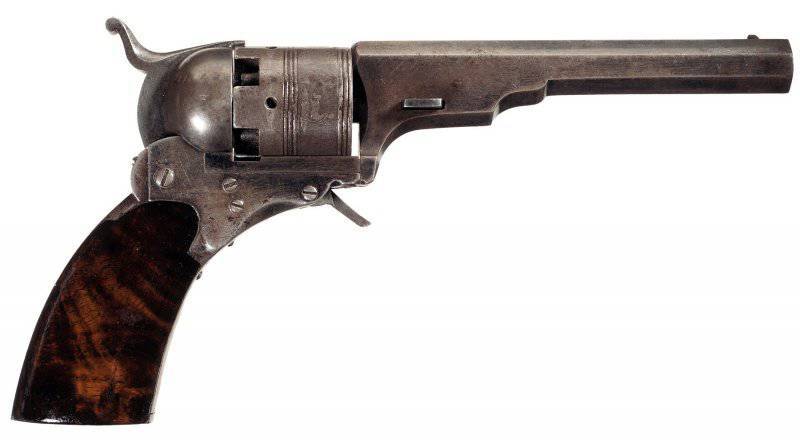
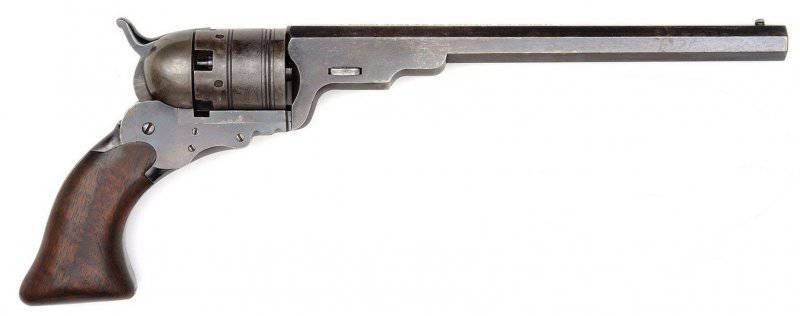
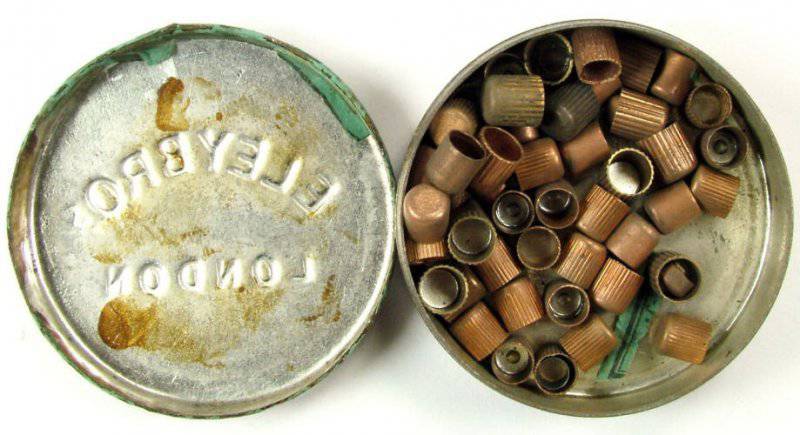
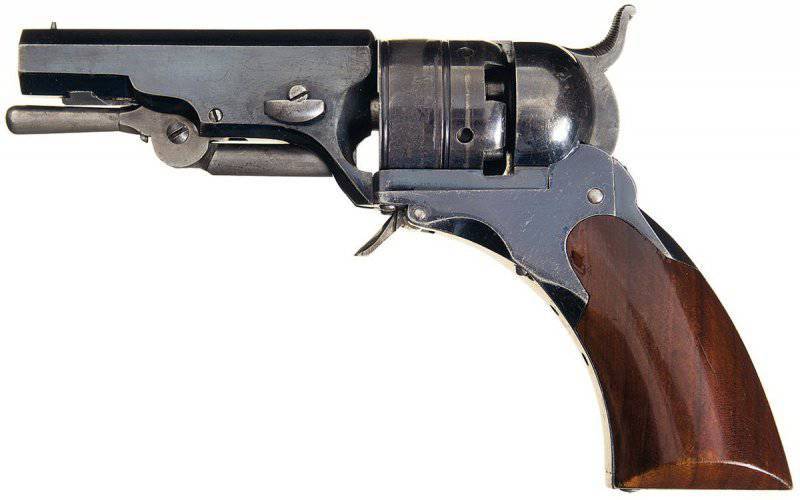
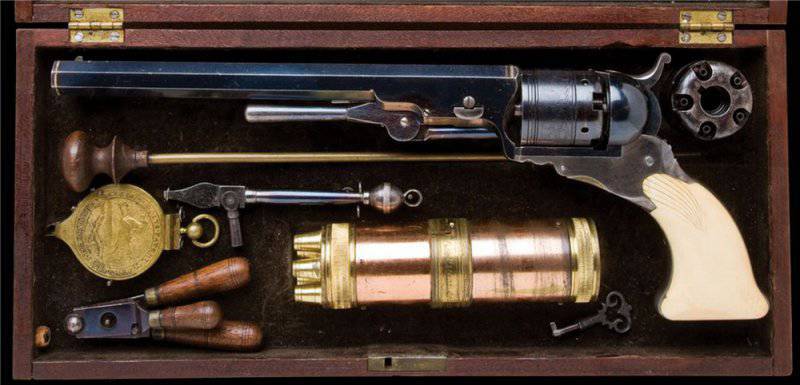
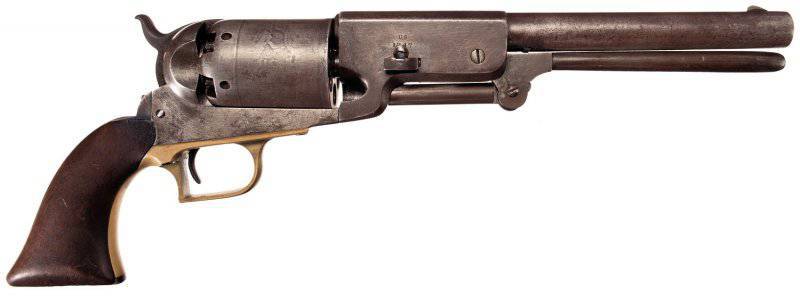
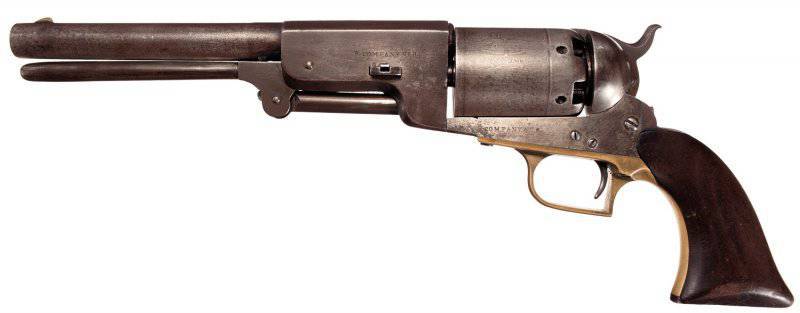
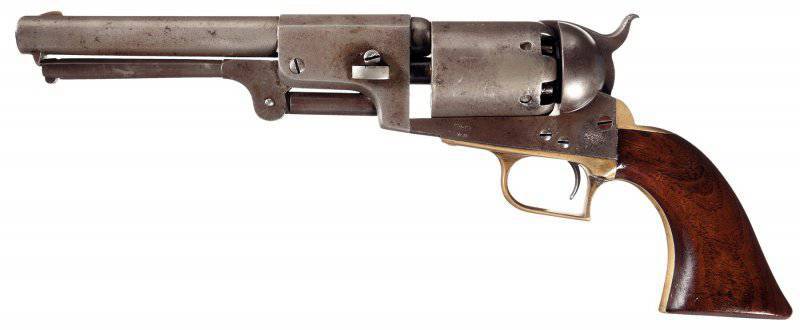
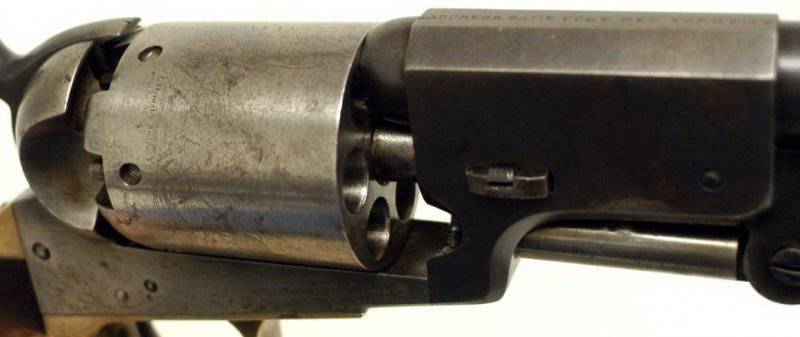
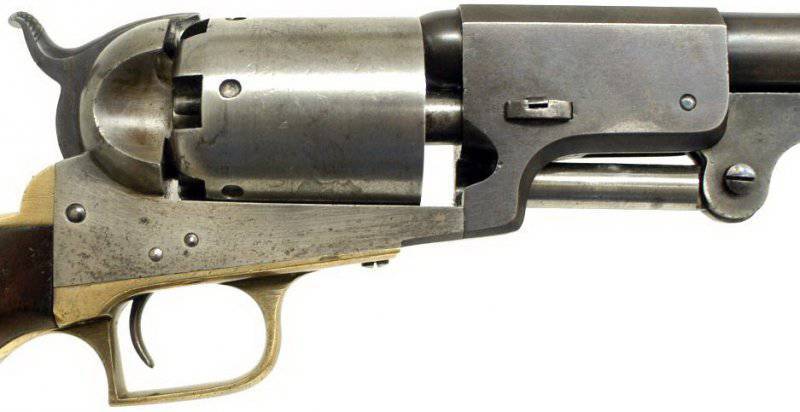
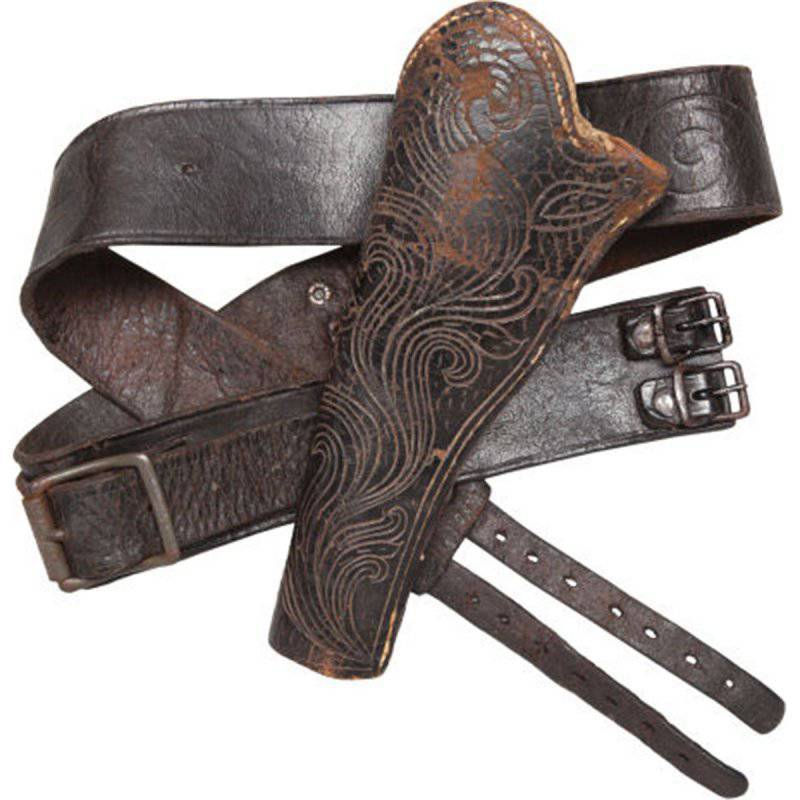
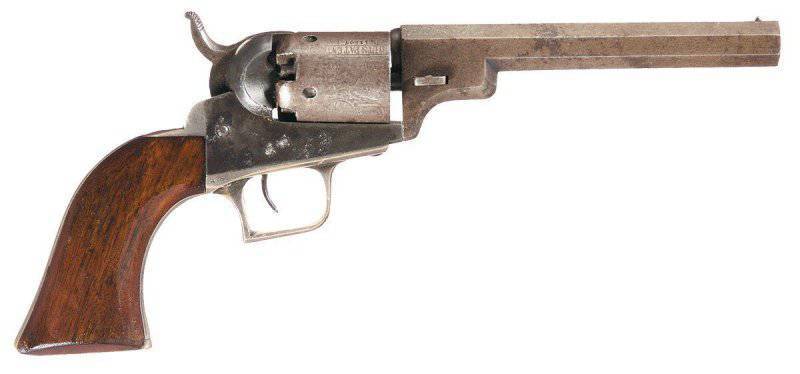
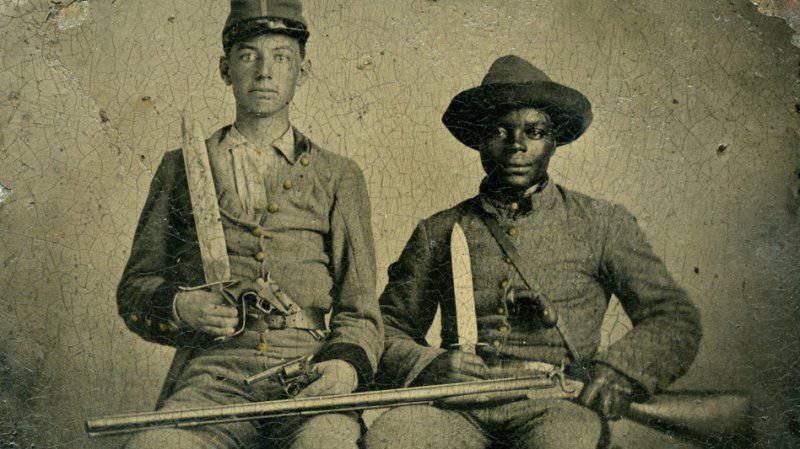
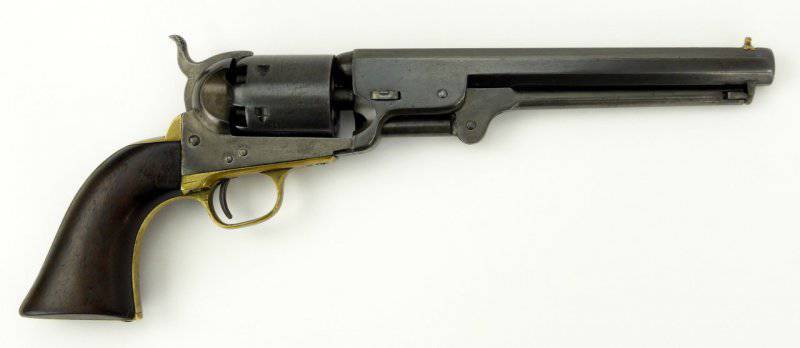

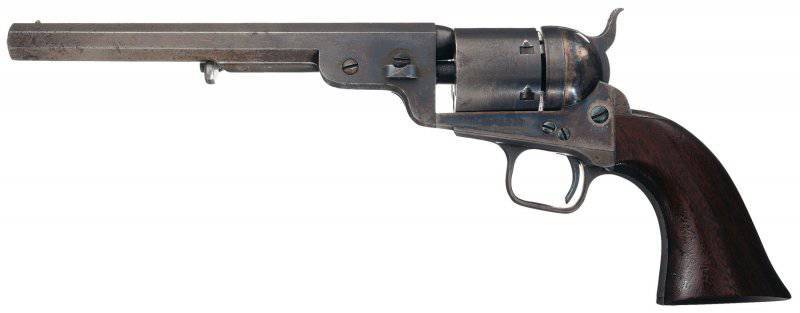
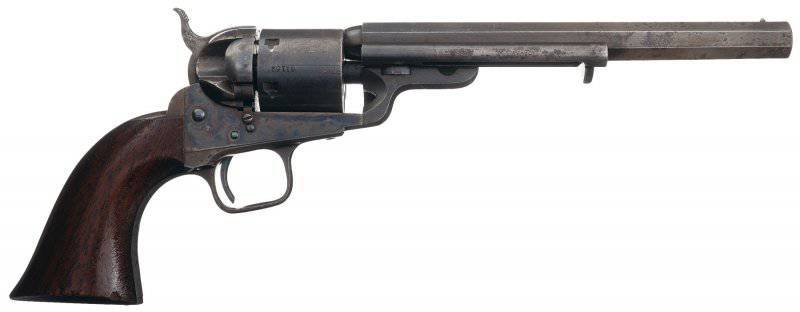
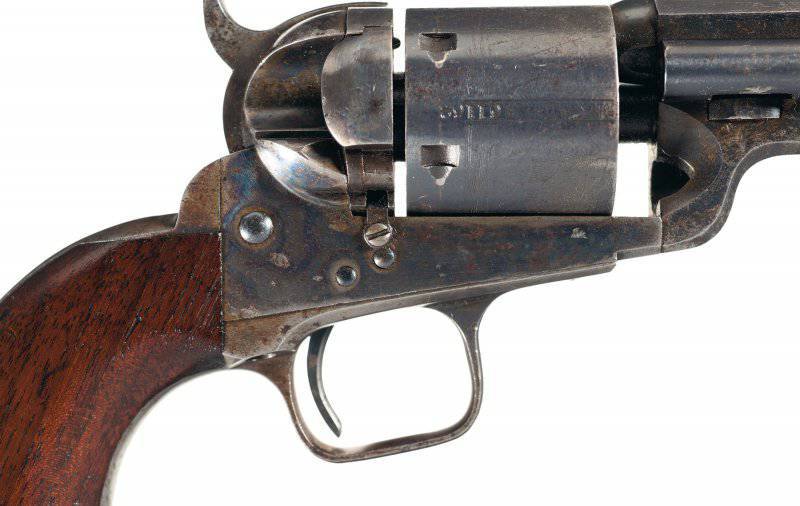
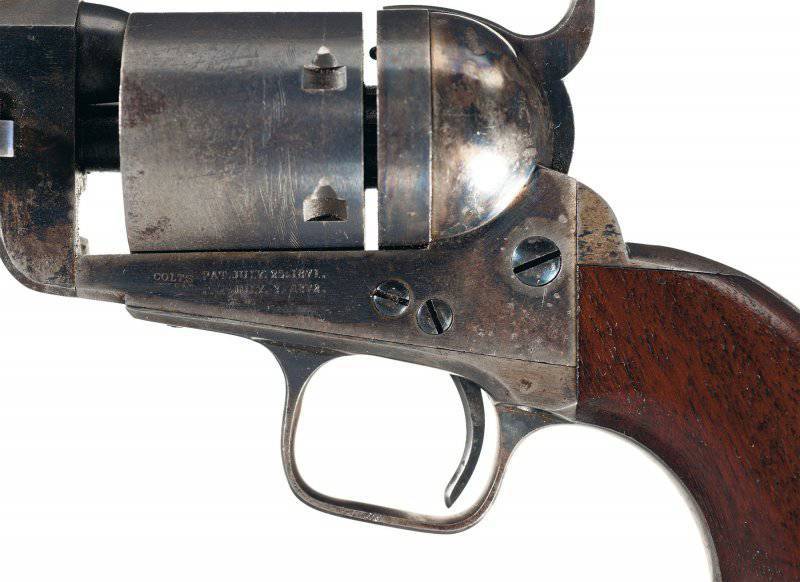
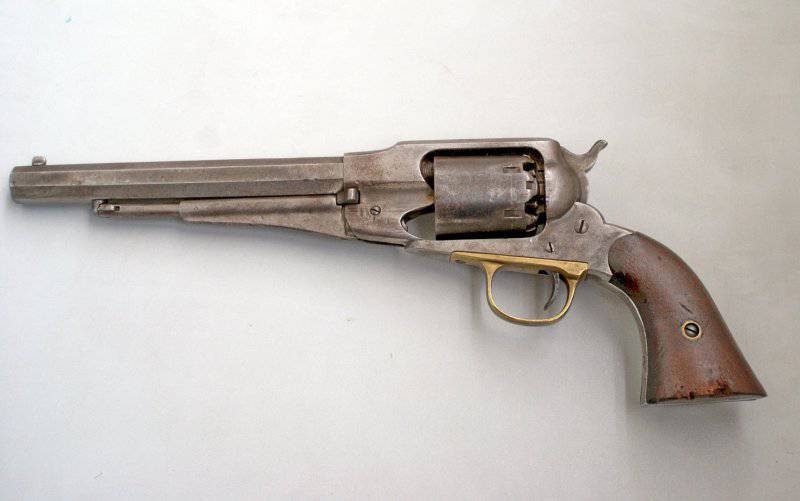
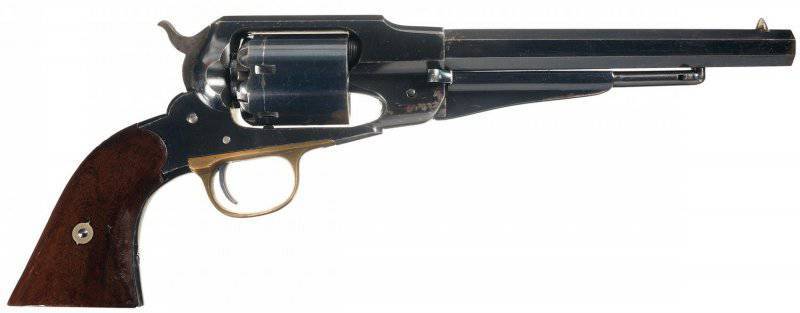
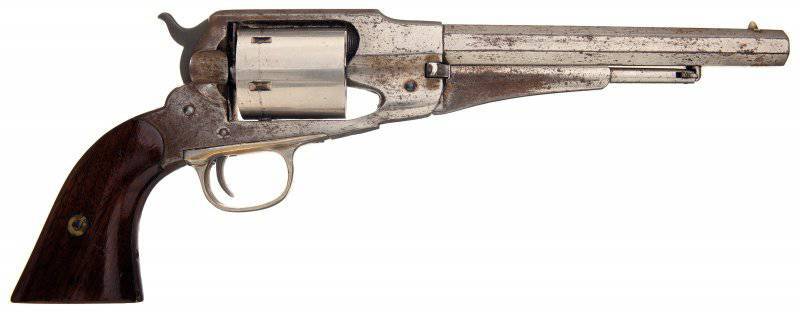
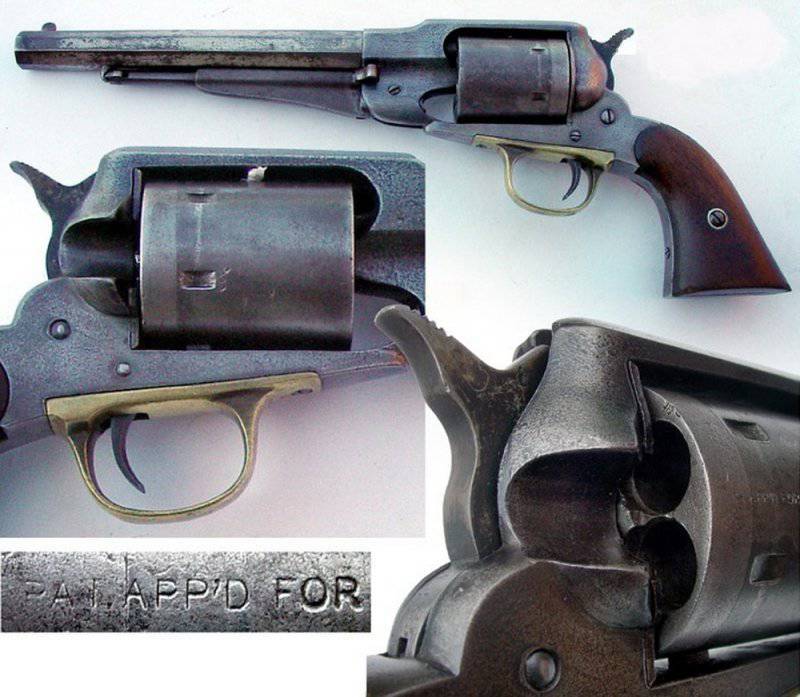
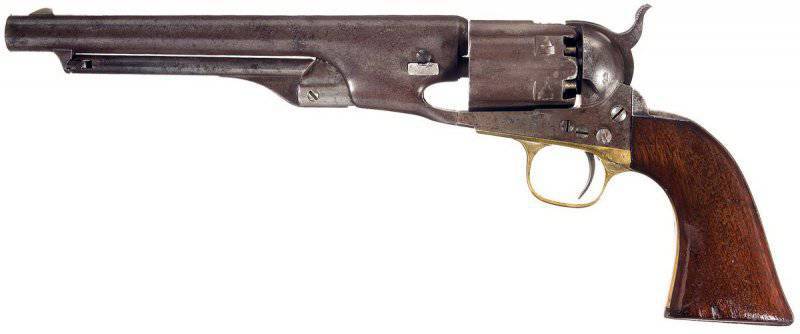
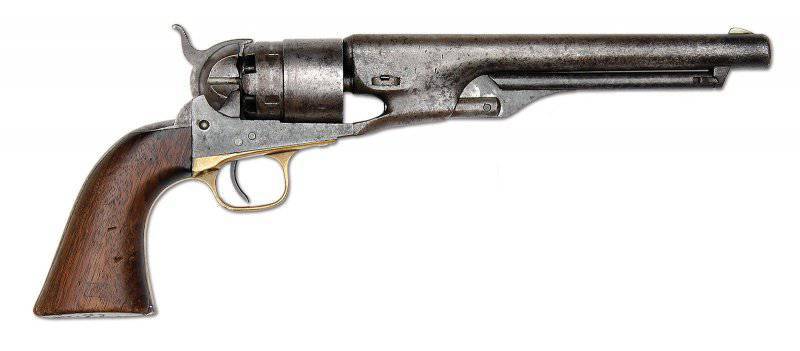
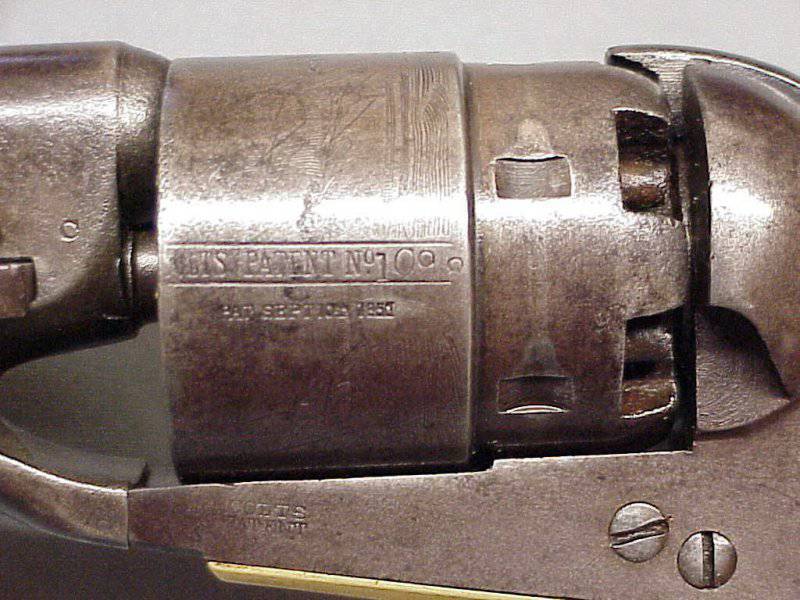
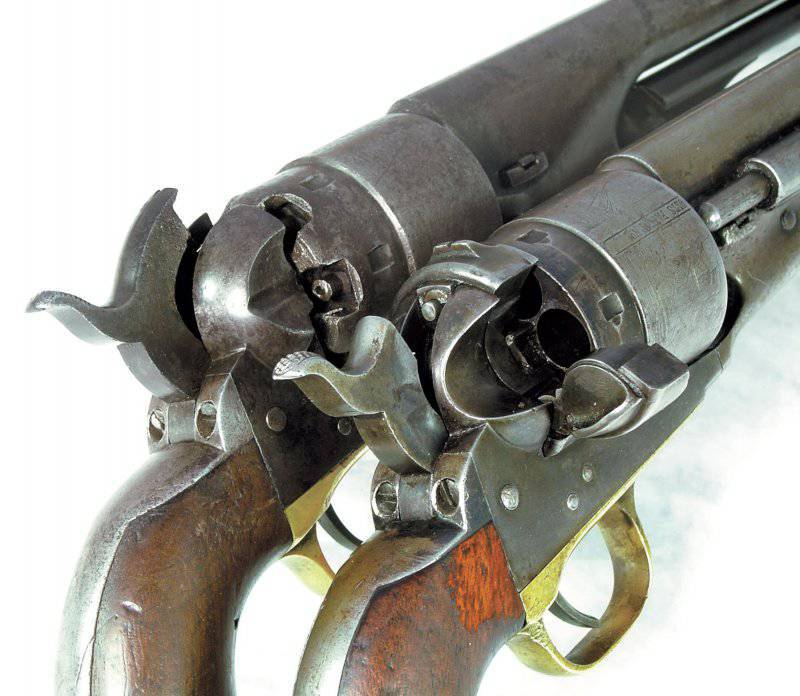
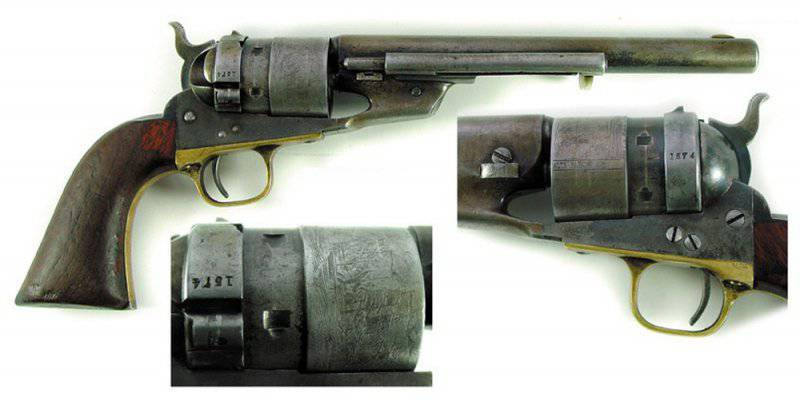
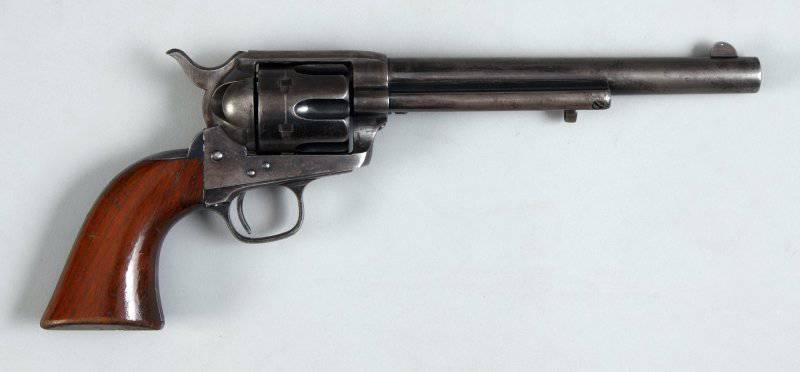
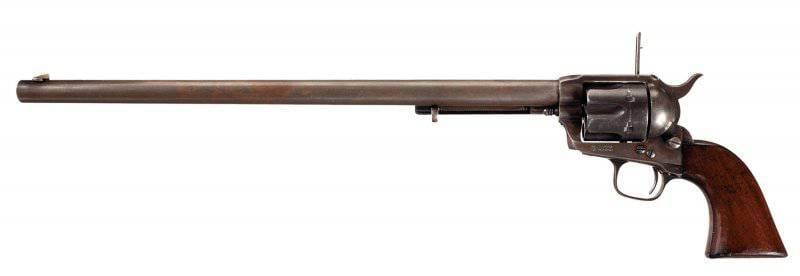

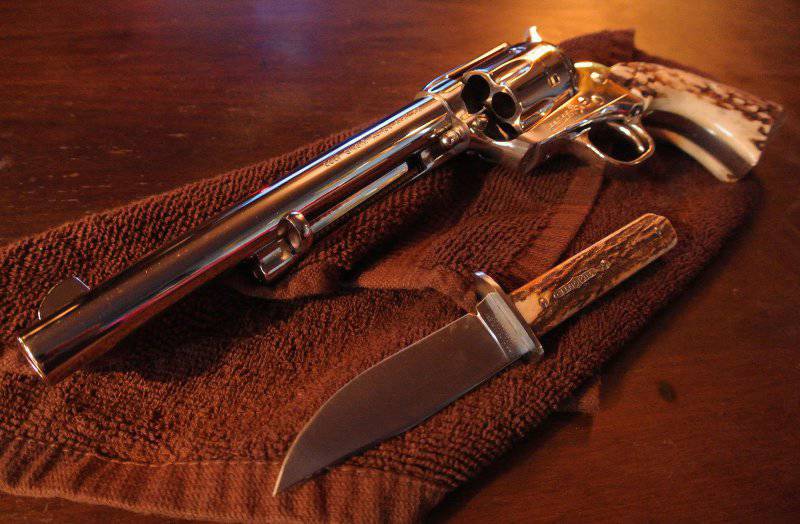
Information